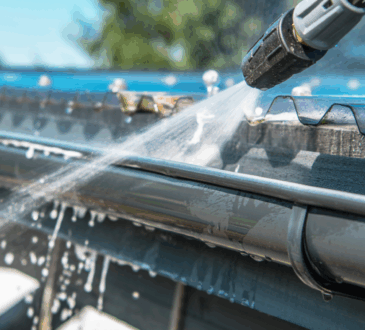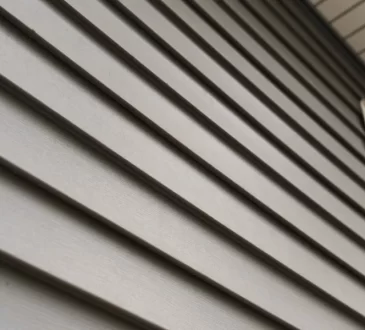
Your bathroom is a sanctuary—a place to unwind, relax, and refresh. But what happens when your bathtub starts showing signs of wear and tear? Do you immediately think about replacing it? Before you jump into a costly and time-consuming bathroom renovation, consider the transformative power of refinishing bathtubs. In this guide, we’ll explore how refinishing can turn your old, worn-out tub into a stunning focal point of your bathroom, all without breaking the bank.
The Beauty of Refinishing
Refinishing, or reglazing or resurfacing, is a cost-effective and eco-friendly alternative to bathtub replacement. It involves cleaning, repairing, and applying a new surface finish to your existing bathtub. This process can breathe new life into your tub and make it look brand new. Here are the reasons why refinishing is an excellent choice:
1. Cost-Efficient
Bathtub replacement can be a pricey endeavour, not to mention the cost of removing and disposing of the old tub and installing the new one. Refinishing, on the other hand, can save you up to 75% of the cost of replacement, making it a budget-friendly option for homeowners.
2. Time-Saving
A complete bathroom renovation can take weeks, causing inconvenience and disruption in your home. Refinishing bathtubs is a much quicker process. In just a day or two, your tub can be transformed, minimising the downtime in your bathroom.
3. Eco-Friendly
Refinishing reduces waste by reusing your existing bathtub instead of sending it to the landfill. This eco-friendly choice aligns with today’s sustainability goals, making it a responsible option for homeowners.
The Refinishing Process
Now that we’ve highlighted the benefits let’s dive into the refinishing process:
1. Surface Preparation
The first step is thorough cleaning and preparation. Technicians will remove any old caulk, grime, and soap scum from the tub’s surface. They will also repair any chips, cracks, or scratches to ensure a smooth and even finish.
2. Masking and Ventilation
Professionals will mask off adjacent fixtures and windows to protect the surrounding areas and ensure proper ventilation. Proper ventilation is crucial during refinishing, as the process may involve the use of chemicals and coatings.
3. Surface Application
Once the surface is prepared, a new finish is applied. This finish can be in the form of a spray, brush, or roller application, depending on the specific product used. The result is a glossy and durable coating that rejuvenates the bathtub’s appearance.
4. Curing Time
After the application, the bathtub needs time to cure and harden. This typically takes around 24 to 48 hours, during which it’s essential to avoid any contact with or use of the tub.
5. Final Touches
Once the curing period is complete, any necessary touch-ups are made. Professionals will re-caulk around the tub and ensure all fixtures are securely in place.
Is Refinishing Right for Your Bathtub?
While refinishing is an excellent option for many homeowners, it may not be suitable for all situations. Here are some factors to consider:
1. Tub Material
Refinishing works best on porcelain, fibreglass, and enamel-coated bathtubs. If your tub is made of materials like cast iron or steel, it can still be refinished but may require additional preparation.
2. Extent of Damage
Refinishing is most effective when your bathtub has minor surface imperfections, stains, or dullness. If your tub has extensive structural damage, replacing it may be more cost-effective.
3. Desired Longevity
While refinishing can extend the life of your bathtub for several years, it may not last as long as a brand-new tub. Consider your long-term plans for your home when making your decision.
4. Budget
Refinishing is an excellent choice if you’re on a tight budget and want to give your bathroom a facelift without breaking the bank.
Maintaining Your Refinished Bathtub
To keep your newly refinished bathtub looking its best for years to come, follow these maintenance tips:
1. Avoid Abrasive Cleaners
Use non-abrasive, mild cleaners to clean your tub. Avoid harsh chemicals and abrasive scrubbers, as they can damage the finish.
2. Regular Cleaning
Regularly clean your bathtub to prevent soap scum and grime buildup. A gentle wipe-down after each use can go a long way towards maintaining its shine.
3. Gentle Use
Be mindful of heavy or sharp objects that may scratch or chip the surface. Treat your refinished bathtub with care to prolong its life.
4. Re-caulking
Inspect and replace caulk as needed to prevent water from seeping into the areas around your tub.
The Bottomline:
Refinishing bathtubs is a practical and cost-effective way to breathe new life into your bathroom without the hassle and expense of a full renovation. It allows you to keep the charm of your existing tub while addressing cosmetic issues. So, before you decide to replace that worn-out bathtub, consider the stunning transformation that refinishing can bring to your bathroom, all while being kind to your wallet and the environment.




